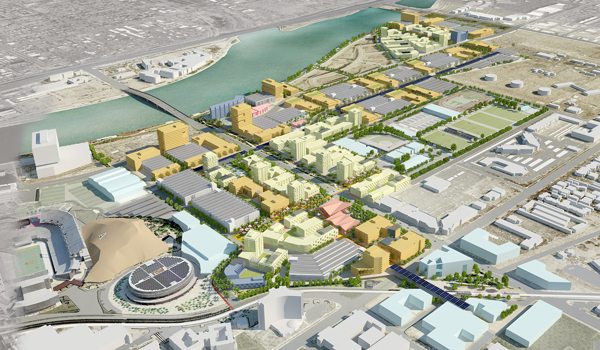This is happening – are we ready?
Entirely new cities and “fiberhoods” are emerging, grounded in cutting-edge technology. Sensor-laden, data-driven and internet-connected, these urban prototypes are the testing grounds for the future.
One of the best examples of this New World Order is Peña Station Next, just outside of Denver – a prototype for the technologically transformed urban neighborhood of the future. Panasonic and Colorado-based developer L.C. Fulenwider are partnering on the project that will double as a proving ground for exotic technology. When completed in 10 to 12 years, it will be a landscape where virtually every object — from lighting to parking meters — will be connected to the internet and will supply a continuous stream of data to the development’s managers, who also will be able to control them via cloud-based apps.
A cutting-edge sensor array already developed by federal government researchers will continuously monitor environmental conditions – everything from the cloud cover to the level of particulates in the air, as well as traffic density and pedestrian count.
“It’s a Fitbit for cities,” explains George Karayannis, vice president of Panasonic’s CityNow smart city division, and also states they aim to make Peña Station Next, “the smartest and most sustainable 382 acres in the country. Some cities are piloting some of these technologies, but no one city is doing all of what we’re doing.”
Panasonic, which chose Denver out of a list of 22 finalists for the site of its technology center, hopes to turn Peña Station Next into both a proving ground for smart-city technology and a template for other real estate projects. Karayannis says the company is already having discussions with “a few dozen” developers across the nation. “We’re looking for opportunities to develop transformative human-centric communities,” he says.
In places such as Peña Station Next, a promising new partnership model is emerging in which a real estate firm partners from the start with a technology company that not only supplies the electronics, software, and expertise, but which becomes an investor as well.
“I think this is where the real estate industry is going,” says L.C. Fulenwider President Ferd Belz, who led the effort to bring Panasonic into the project. “They’re with you from the beginning, as the technology evolves. This is going to be a learning lab, where we’ll be experimenting with systems and figuring out how to make the work. That’s hard to do if you just work with a technology contractor.”
In January 2016, AT&T launched their Smart Cities framework using internet of things (IoT) innovations to create impactful solutions for cities and forming alliances with technology leaders and industry organizations. They are currently working with eight U.S. cities through public-private partnerships to develop smart solutions for their various challenges.
Embracing this technological revolution means local officials face the complicated task of figuring out how to retrofit existing infrastructure or to layer new capabilities onto it. While governments’ efforts to make cities smarter are often constrained by funding, political inertia, and the pressure to focus on immediate problems rather than long-term transformation, private developers have more freedom and agility to create projects with the latest technology, perhaps advancing the smart cities concept more rapidly.
The Smart Cities movement is the wave of innovation already starting to transform urban areas across the globe – and in the process is creating new challenges and opportunities for the commercial real estate sector. Advances such as the IoT, in which devices communicate with each other via internet connections; sophisticated sensing technology; wireless broadband; “big data” analysis; and automation are converging to improve how cities use energy, water, and other resources; how they manage traffic and monitor environmental quality, and how they provide basic services such as policing.
Colorado-based Navigant Research predicts that the market for smart cities technology will grow to $27.5 billion worldwide by 2023.
Experts say that the moves toward smart cities are playing out in a variety of ways, but the most rapid progress toward smart cities may come in the commercial real estate sector, where private entities developing greenfield projects or renovating sizable urban parcels have more freedom and agility to embrace innovation.
The Valley of the Sun now has a front-row seat in the smart cities movement as development of ASU’s Novus Innovation Corridor in Tempe unfolds.
This is happening – we’re most definitely ready.




